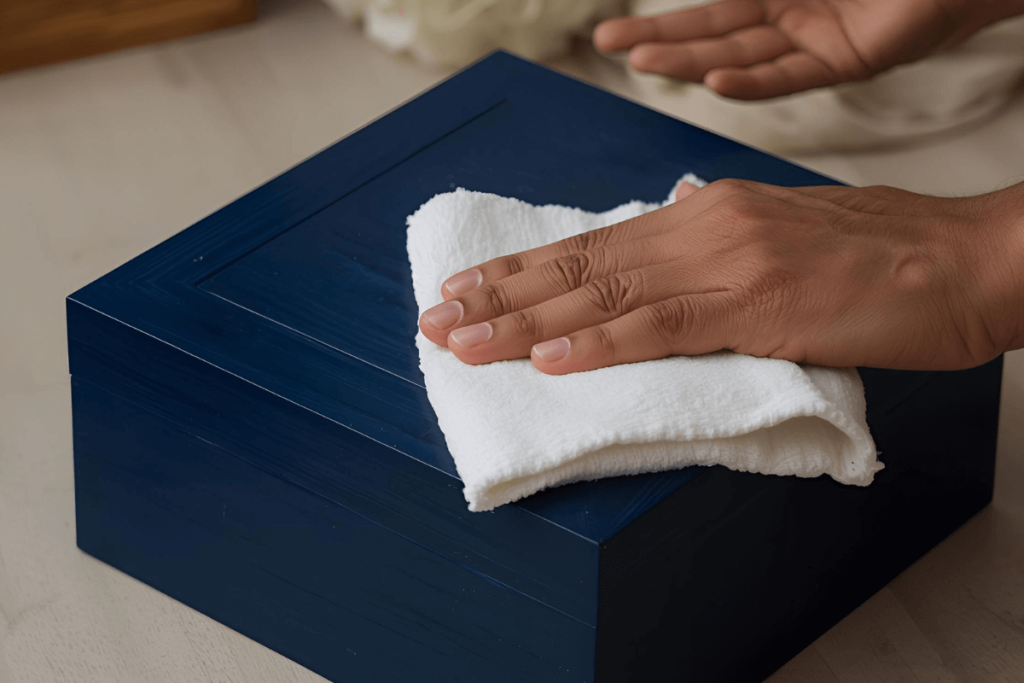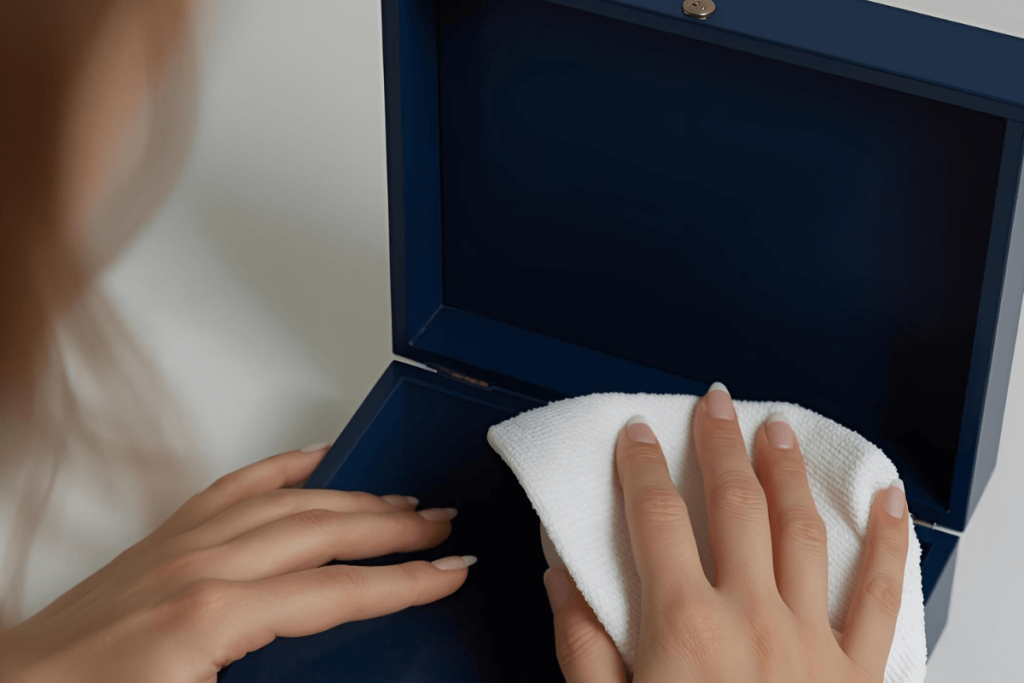Lacquerware is more than just a beautiful decorative item; it is a testament to the artistry and craftsmanship that has been honed over centuries. These exquisite pieces require a level of care far beyond simple dusting.
What if I told you the way you’re currently cleaning your lacquerware might be slowly destroying it? Join me as we uncover the surprising truths about lacquerware preservation, delve into its unique needs, and share expert techniques to keep your treasured items gleaming and protected.
Table of Contents
- Unmasking the Lacquer Legacy
- The Silent Threats: Enemies of Lacquer
- The Gentle Touch: Daily Care Rituals
- Beyond the Basics: Advanced Preservation
- Your Lacquer Lifeline: Ongoing Protection
- Share Your Lacquerware Journey
- Related Content
Unmasking the Lacquer Legacy
A Hidden History
Lacquerware has a rich and storied history that dates back thousands of years. Originating in Asia, particularly in countries like Vietnam, Japan, and China, lacquerware is crafted from the sap of the lacquer tree.
This sap, when processed, creates a durable and glossy finish that has captivated artisans and collectors alike. Beyond its aesthetic appeal, lacquerware embodies cultural significance, often reflecting the traditions, beliefs, and artistic expressions of the societies that create it.
Understanding the origins of lacquerware is crucial for its proper care. The delicate nature of lacquer, combined with the intricate methods used to create these pieces, means that they require special attention to maintain their beauty and integrity.
Visual Tour of Diverse Styles
Lacquerware comes in various styles, each with its unique characteristics. From the intricate designs of Vietnamese lacquerware, often inlaid with mother of pearl, to the minimalist elegance of Japanese lacquer, there is a wide array of options that showcase the versatility of this craft.
A quick visual tour of these styles can pique immediate interest and appreciation for the artistry involved.
The Silent Threats: Enemies of Lacquer
Environmental Factors
While lacquerware is known for its durability, several environmental factors can silently damage these beautiful pieces.
Humidity
Humidity is one of the most significant threats; excessive moisture can cause the lacquer to soften, leading to warping or peeling. Conversely, extremely dry conditions can result in cracking.
Direct Sunlight
Direct sunlight is another enemy of lacquerware. Prolonged exposure can fade the colors and degrade the finish over time, leaving your once-vibrant pieces looking dull and lifeless.
Everyday Handling Errors
Even the way we handle lacquerware can lead to irreversible damage. Common mistakes include using abrasive cleaning materials, exposing pieces to extreme temperatures, or placing them in high-traffic areas where they can easily be knocked over.
Before and after visuals of damaged lacquerware can underscore the importance of preventative care. For instance, a piece that has been subjected to harsh cleaning methods may show scratches and dullness, while one that has been cared for properly retains its original luster.

The Gentle Touch: Daily Care Rituals
Safe and Effective Cleaning Techniques
Caring for lacquerware begins with understanding the best cleaning practices. Here are some safe and effective techniques using readily available, gentle products:
- Dust Removal: Use a soft, lint-free cloth to gently dust your lacquerware. Microfiber cloths are ideal for this purpose, as they trap dust without scratching the surface. Avoid feather dusters, which can be abrasive.
- Minor Stain Treatment: For minor stains, lightly dampen a cloth with water or a mild soap solution. Wipe the stained area gently, avoiding excessive moisture. Always dry the area immediately with a clean, dry cloth to prevent water damage.
- Avoiding Harsh Chemicals: Steer clear of abrasive cleaners, ammonia-based products, or any harsh chemicals that can damage the lacquer finish. Natural cleaning solutions are preferable for maintaining the integrity of the lacquer.
Storage Solutions and Display Tips
Proper storage and display are essential for preserving lacquerware. Here are some tips to protect your pieces from everyday wear and tear:
- Keep Away from Direct Sunlight: Display your lacquerware in areas that are shielded from direct sunlight to prevent fading and degradation of the finish.
- Use Protective Cases: If possible, store valuable pieces in glass display cases to keep dust and environmental factors at bay.
- Avoid High-Traffic Areas: Position lacquerware away from high-traffic areas where it might be accidentally bumped or knocked over.
Beyond the Basics: Advanced Preservation
Addressing Specific Challenges
Despite your best efforts, lacquerware may still encounter issues such as cracks, chips, or dullness. Here’s how to address these challenges:
- Cracks and Chips: Small cracks and chips can sometimes be repaired with lacquer touch-up kits. However, for significant damage, it’s best to consult a professional conservator who specializes in lacquerware.
- Dullness: If your lacquerware appears dull, it may benefit from a gentle polishing. Use a soft, dry cloth to buff the surface lightly, restoring some of its shine.
Professional Restoration
When it comes to serious damage, knowing when to seek professional restoration is crucial. Look for conservators who specialize in lacquerware and have experience with the specific techniques used in its creation.
A skilled professional can help restore your treasured items while preserving their original beauty.
The Impact of Air Quality and Temperature Control
The environment in which lacquerware is stored can significantly affect its longevity. Air quality plays a vital role; pollutants and dust can settle on the surface and cause deterioration over time. Additionally, temperature control is essential.
\Fluctuations in temperature can lead to expansion and contraction of the lacquer, especially if your lacquer is an antique and this can potentially causing cracks. Aim to keep lacquerware in a stable environment, ideally between 60°F to 80°F (15°C to 27°C) with moderate humidity levels.

Your Lacquer Lifeline: Ongoing Protection
Setting Up a Care Schedule
To maintain the luster and prevent future damage to your lacquerware, consider establishing a simple care schedule. Here’s a suggested routine:
- Weekly: Dust your lacquerware with a soft cloth to prevent buildup.
- Monthly: Inspect for any signs of damage, such as cracks or dullness, and address minor issues promptly.
- Seasonally: Conduct a deeper clean, including minor stain treatments and polishing as needed.
Recommended Tools and Products
Creating a lacquerware care kit can simplify the maintenance process. Here are some recommended tools and products to include:
- Soft microfiber cloths for dusting and cleaning
- Mild soap solution for gentle cleaning
- Lacquer touch-up kits for minor repairs
- Natural polish specifically designed for lacquerware
Having these items on hand will make it easier to care for your lacquerware and keep it looking its best.
Share Your Lacquerware Journey
Caring for lacquerware is an art in itself, requiring knowledge, patience, and a gentle touch. By understanding the unique needs of these beautiful pieces and implementing the proper care techniques, you can ensure that your lacquerware remains a cherished part of your collection for years to come.
As you embark on your lacquerware preservation journey, I encourage you to share your own stories and tips. What challenges have you faced in caring for your lacquerware? What techniques have you found most effective? Together, we can foster a community dedicated to preserving the beauty and legacy of lacquerware for future generations.
At Mondoro, we craft a diverse range of traditional Vietnamese lacquerware. We’ve covered you from boxes, trays, and lamps to furniture and various home decor accessories if you’re headed to connect with us.
Find out more about how Mondoro can help you create, develop, and manufacture excellent home decor and home furniture products – including lacquer home decor and furniture. Don’t hesitate to contact me, Anita. Check out my email by clicking here or become a part of our community and join our newsletter by clicking here.
Mondoro gives out a FREE Lookbook to anyone interested. You can receive a copy of our latest Lookbook by clicking here.
Listen to our Podcast called Global Trade Gal. You can find it on all major podcast platforms. Try out listening to one of our podcasts by clicking here.
Subscribe to our Mondoro Company Limited YouTube Channel filled with great videos and information by clicking here.
Related Content
Lacquerware And Mother Of Pearl – 10 Reasons We Love Them!
We love lacquerware and mother-of-pearl products. Lacquerware and mother of pearl are high-quality handmade products that can be produced in a variety of finishes and techniques in various shapes and sizes. You can use the materials for all kinds of home decor and home furniture products.
You can discover more by reading Lacquerware And Mother Of Pearl – 10 Reasons We Love Them! by clicking here.
The Pros And Cons Of Lacquer Vs. Enamel Finishes
Lacquer and enamel are popular finishes used in various applications, from woodwork and furniture to cars and machinery. While both can provide a glossy finish, they differ in composition, durability, and application.
You can discover more by reading The Pros And Cons Of Lacquer Vs. Enamel Finishes by clicking here.
About Vietnamese Lacquer Furniture And Accessories
Vietnamese lacquer requires many manufacturing steps in the lacquer production process, including making the base, preparing the lacquer base to be applied, and finally, using the lacquer paint on the surface. Every piece must be carefully sanded to give it a very smooth surface. Vietnamese lacquerware production requires a lot of skill and knowledge.
To learn more, you can read About Vietnamese Lacquer Furniture And Accessories by clicking here.

